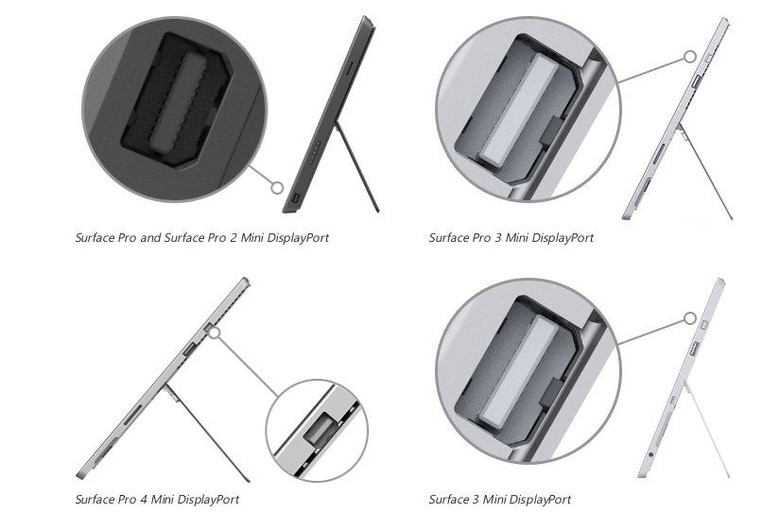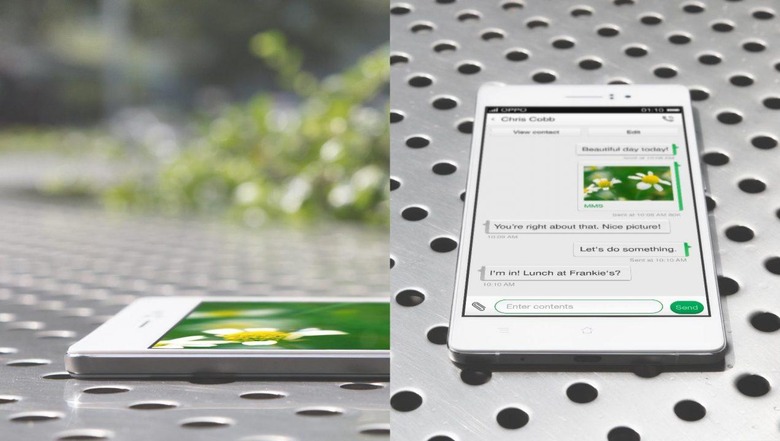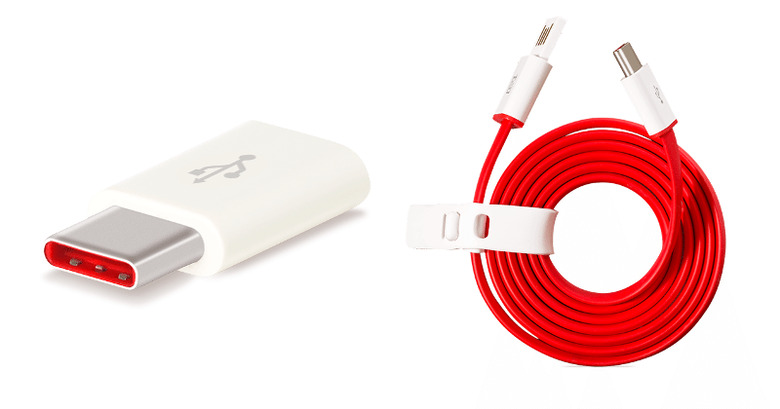When giants falter: Apple, companies abandon standard connectors
Early this week, Apple announced its refresh of the 12-inch MacBook without much fuss nor fanfare. It wasn't really that unexpected, considering the new line simply bumped up the specs a little but offered nothing extraordinarily different. But that silence almost hints at something brewing underneath, a sign that few picked up: the death knell for Thunderbolt. Once one of the apples of Apple's eye, the connector is silently absent from its latest MacBooks. With the rumors of another standard connector to be absent from a future iPhone, we begin to wonder why Apple is suddenly abandoning the very standards it tried to push hard.
Mini DisplayPort
Apple's dance with connectors actually started with the Mini DisplayPort. Born back in 2008, Apple developed the connector to become a smaller, more compact version of the DisplayPort interface, which was more or less established before that time. Thanks to Apple's clout in the market, the Mini DisplayPort quickly became more than just an Apple innovation. VESA, the association behind the main DisplayPort specification, adopted it in just a year's time. Countless devices, especially laptops and mini PCs, have started to support the connection. Even Microsoft put it in its Surface Pro tablets. Mini DisplayPort became a de facto standard in connectin computers to displays, at least in the enterprise. In most consumer devices, however, HDMI, in all its size incarnations, was more prevalent.

In just three years, however, Apple would partner with Intel to introduce Thunderbolt to the world. Given the duality of its capabilities, not to mention the fact that it uses a Mini DisplayPort connector, it was pretty clear that Apple meant for Thunderbolt to supplant Mini DisplayPort, leaving it to VESA and other OEMs to decide the latter's fate.
Thunderbolt
Thunderbolt actually has two parents. On the one hand, it traces its roots to Intel's fiber optic Light Peak. On the other hand, its copper-based version, as well as its name, came from Apple. Like Mini DisplayPort, it could be used to connect computers to external screens. In fact, for two generations it used the same connector as Mini DisplayPort. Unlike that older standard, however, Thunderbolt transfered more than graphics data. It could ferry data and even power for other devices, pretty much the USB standard. However, it boasted significantly faster speeds than any USB standard could provide at that time.

Unlike Mini DisplayPort, OEM uptake on Thunderbolt was noticeably slower. Despite being actually owned by Intel after Apple the trademark to the chipmaker, it has generally been seen as an Apple-oriented technology. It doesn't help that many of the accessories, particularly external storage solutions, sold in Apple Stores used Thunderbolt, usually in addition to plain old, slow USB. While accessory makers were more than happy to cater to Apple's needs, other OEMs were more keen on keeping USB as the industry standard. Today, very few brands continue to advertise Thunderbolt as a defining factor, LaCie being one of the most prominent.
For its latest MacBook, and so far only on its latest MacBook, Apple has chosen to go with USB Type-C, or USB-C. USB has one a long way and provides decent speeds, and the latest USB 3.1 spec boosts both speed and power to levels perhaps acceptable to Apple. It perhaps didn't make sense for Apple to continue rooting for Thunderbolt's fat connectors, especially when it is aiming for a super thin device like the MacBook. That factor, however, might also play an important role in a still unconfirmed rumor about the next iPhone, or at least next year's iPhone.
3.5 mm Audio Jack
One of the most persistent rumors about the iPhone 7, or, barring that, the iPhone 8, is that it will ditch the 3.5 mm audio jack that has become the standard for connecting wired headphones in almost any device these days. The reason? Supposedly because Apple wants to slim the iPhone down even further. Looking at just the iPhone 6s, it is evident that the circular hole of that port is the tallest among the iPhone's connectors. So yes, maybe Apple's reason, if that were really the case, does have merit. It won't be the first, however. The OPPO R5 launched late 2014 with a ridiculously thin 4.9 mm profile, perhaps thanks to sacrificing the same jack. Just yesterday, Chinese OEM LeEco unveiled a trio of smartphones that used only a USB-C port for a headphone connection. Sadly, it doesn't get that same thin body.

While it is certainly possible for Apple to abandon the 3.5 mm audio jack, there is still some debate on what it will use to replace it. The most obvious candidate is, of course, a lightning connector, the very same that Apple already uses for data connection and charging on both iPhones and iPads. It's a proprietary connector, for sure, but it is also well known and perhaps easy to adapt. That said, given recent developments, another alternative is certainly possible as well: USB Type-C.
USB Type-C
Rumor has it, Apple created USB-C and then donated it to the USB spec group. Even if you don't buy that, it's not hard to see Apple's touch in its development. The reversible connector has long been the Lightning connector's superior feature over USB. The fact that Apple was so quick to jump at USB-C for its new MacBook, to the exclusion of any other port save the headphone jack, perhaps hints at that as well. It is certainly heartening to see Apple solidly back, in word and in deed, a standard connector that isn't proprietary to it (like Lightning) or not so adopted by the industry (like Thunderbolt). It is, however, still surprising in some cases, puzzling in others.

That it didn't support Thunderbolt 3 on the new MacBook is, for example, strange, considering the latest Thunderbolt 3 spec ditches the bulky Mini DisplayPort connector for a slim and reversible USB-C, just like how Apple would have liked it. That Apple still snubbed it perhaps speaks to the company's desire to really move away from Thunderbolt. After all, USB-C fulfills all those functionality as well and is at least poised to be a wider standard than Thunderbolt can ever hope to be.
Ditching the Lightning connector on the iPhone and iPad might be a bit too much, however. Like the initial uproar over the MacBook's lone USB-C port, such a move will immediately make obsolete any accessory that depended on Apple's proprietary connectors for years. By now, there are definitely more USB-C accessories available than last year and Lightning to USB-C adaptors will most likely be easy to sell. It will, however, require another round of certification for accessory makers and will be disruptive to the market to say the least. But that is perhaps exactly what Apple is aiming for.
Wrap-up: Conflicting Standards, Orphaned Products
The funny thing about all this is that these connectors are, or claim to be, industry standards. Popoular geek webcomic XKCD perhaps illustrates the situation best:
The situation is probably never going to change and we can only hope that at least majority of the key players rally behind the same set of standards. But that is something that will take time. In the meantime, however, the market could very well be thrown in disarray, with both consumers and manufacturers uncertain, if not exasperated, about the future. Imagine if the somewhat pricey but high quality accessory that you purchased suddenly became useless because a manufacturer dropped support for a connector that, for years, has been a staple on any device of its kind. It's not going to be a pretty picture. Sure, there will be adaptors of all sorts that will flood the market to meet a need, but not all of them might deliver the same fine-tuned quality as a direct connection provides.
That might actually be what Apple is aiming for. By forcing the issue, accessory makers will have no choice but to adapt quickly or be left out. And no one really wants to be left out of Apple's parties. Just look at how USB-C accessories suddenly burst into the seen, in no small part thanks to the new MacBook, itself a desirable product, sporting one and only one USB-C port. Of course, we've also seen the emergence of poorly made accessories, but that has only made consumers and retailers more acutely aware of the need to properly follow the standards.
And if Apple follows the same path regarding 3.5 mm jacks, whether the replacement will be Lightning or USB-C, we are bound to see the same thing happen all over again. And this time, tempers might rise higher, as the accessories the ingeniously utilize headphone jacks are usually not only expensive but also carefully designed for headphone jacks. Of course, Apple, as well as other big proponents of USB-C should Apple go that route, could use its clout to "encourage" big brands to jump in quickly.
Needless to say, companies abandoning standards, especially the ones they themselves promoted, is a discouraging and confusing situation to be in. This time, we might be lucky that it could be for a good, hopefully long-term cause. There is definitely going to be some negative vibes in the beginning, akin to teething pains. One can only hope it passes by quickly.

